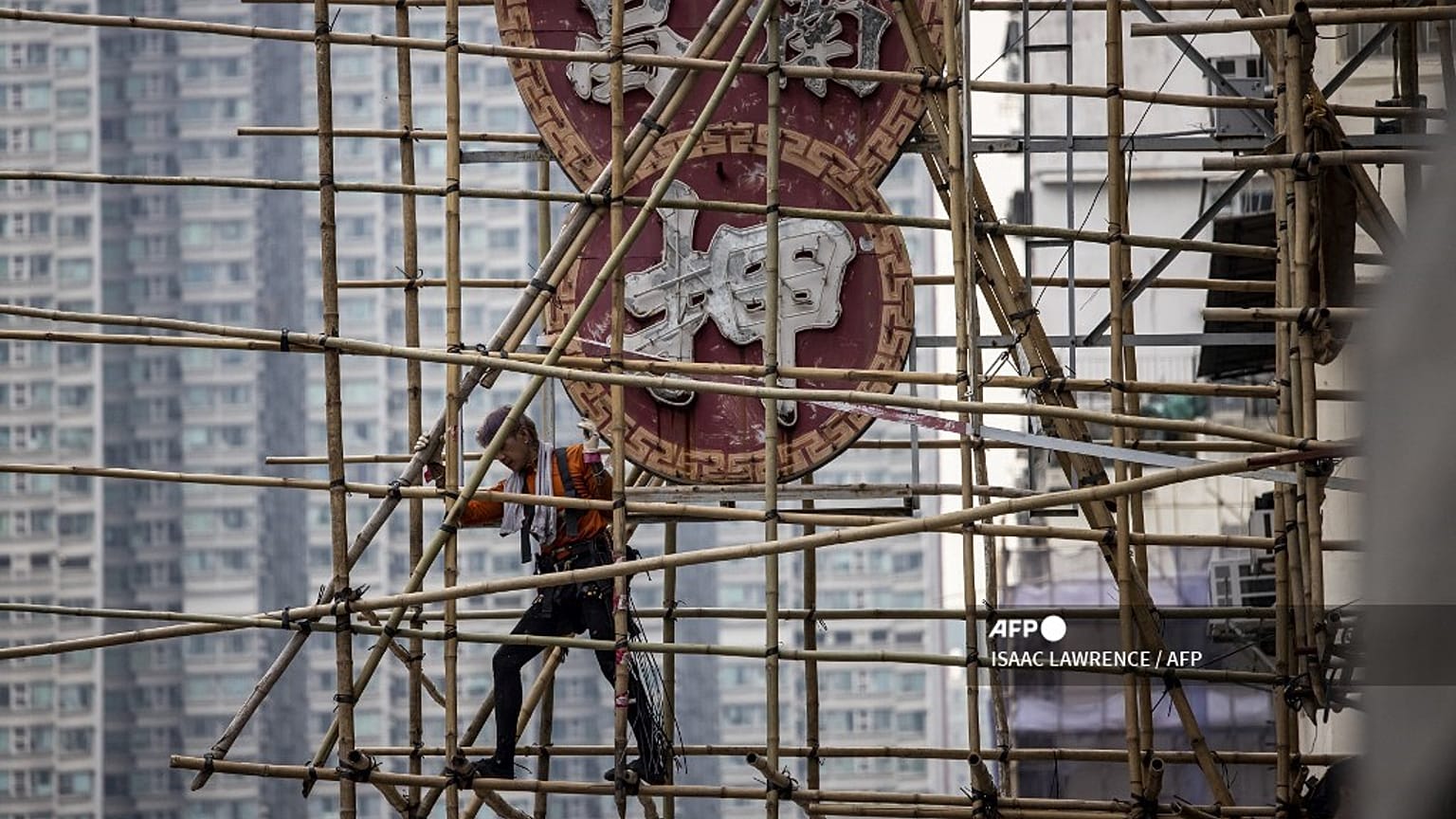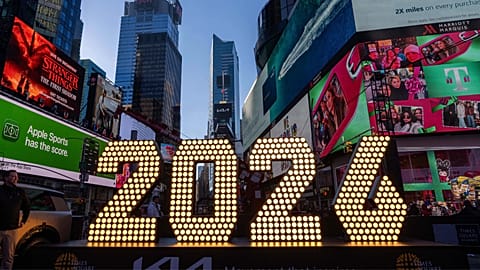Intricate bamboo webs are still part of the cityscape in Hong Kong - where brave students are keeping the sustainable skill alive.
Mo Jia Yu wraps his legs around a pole to balance high above the ground and secure a joint, a skill he must master to become a bamboo scaffolder in Hong Kong.
The metropolis is one of the world's last remaining cities to use bamboo scaffolding in modern construction and building repair.
Scaffolders perched on bamboo frames several storeys high are a common sight, and are nicknamed "spiders" by Hong Kongers for their agility over the web-like latticework.
"You have to have a daring heart," says Mo, one of dozens of students who enrol each year at the city's Construction Industry Council (CIC) to learn the traditional method.
Why is bamboo a sustainable building material?
Scaffolding using bamboo dates back centuries and was once a widespread practice across China and elsewhere in Asia.
Most cities in the region have phased it out to favour materials such as steel and aluminium.
But there is a growing interest in using the biomaterial for modern designs, due to its lightness, flexibility and low cost.
That’s good news for the environment too: the grass grows quickly and is able to sequester large amounts of carbon from the atmosphere.
Bamboo also requires very little water and doesn’t need to be sprayed with pesticides or fertilisers to grow. Plus, it releases 35 per cent more oxygen into the air compared to trees of the same size.
Some researchers have suggested that the bendy grass could help buildings adapt to the threat of natural disasters like earthquakes and hurricanes, replacing steel ‘rebars’ (the rods used to support concrete).
What is the future of bamboo scaffolding in Hong Kong?
In Hong Kong, intricate bamboo webs are still part of the cityscape, latticed around both old residential flats and glitzy skyscrapers.
Scaffolding is regulated by strict safety guidelines but is still viewed as a dangerous profession since the work is often done at dizzying heights.
"You need courage as well as skill to survive," says Wallace Chang, a professor at Hong Kong University's architecture department. "This deters people from going into the industry."
Despite the perils involved in the craft, Chang hopes Hong Kong will preserve it as part of its cultural heritage.
Bamboo is readily available across the border in southern Chinese provinces. Its price and efficiency makes it enduringly popular, while lightweight bamboo is also easier to transport through a cramped urban centre.
"Bamboo scaffolds are very suited to the odd and tight spaces in Hong Kong," adds instructor Kin Kee Wo, who has worked in the construction industry for nearly 30 years.
"It can be built in the most unthinkable places, in the most beautiful ways."


















